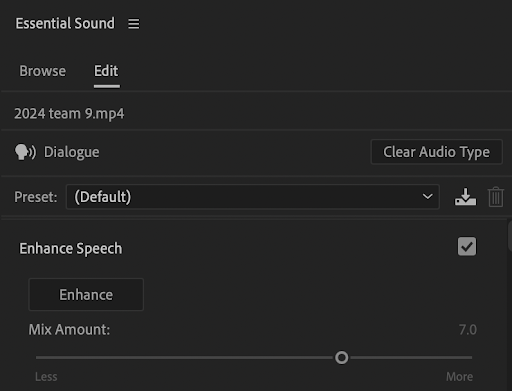Black History Month Content Ideas
February is the birth month of Abraham Lincoln and Frederick Douglass which played a large part in Carter G. Woodson’s creation of Black History Week and later Black History Month in 1926. Carter is called the “Father of Black History Month” and helped found the Association for the Study Of African American Life and History.
Black History Month is not only an American institution, it is also celebrated in Canada and the United Kingdom - though the UK celebrates in October.
Below you will find 28 ideas aligned to dates to help you and your students get a plan together for how to incorporate Black History Month into your program. I highly suggest that you bring in other people, programs, and community organizations to help your students tell these amazing stories.
Date | Topic | Info | Ideas |
2/1 | The Abolition of Slavery in the United States (1865) | The 13th Amendment to the Constitution was a landmark achievement, ending the legal institution of slavery in the U.S. | A vignette about the history of slavery in the United States and the steps to the abolition of Slavery |
2/2 | The Civil Rights Act of 1964 | This act outlawed discrimination based on race, color, religion, sex, or national origin, marking a major step forward in the Civil Rights Movement. | A student could read the act and determine the elements of act that they would like to feature in a news package. |
2/3 | The Montgomery Bus Boycott (1955-1956) | Sparked by Rosa Parks' refusal to give up her seat, this boycott led by Martin Luther King Jr. challenged segregation and ignited the Civil Rights Movement. | If you are in a city with public transit, this may be a way to get someone from that organization to talk about the Boycott and the impact on public transit. |
2/4 | Brown v. Board of Education (1954) | This Supreme Court ruling declared segregation in public schools unconstitutional, overturning the "separate but equal" doctrine. | This is a layup… See if you can walk with your system’s attorney about what happens if schools violate this. |
2/5 | Jackie Robinson Breaking the Color Barrier (1947) | Robinson's entry into Major League Baseball with the Brooklyn Dodgers challenged racial segregation in professional sports. | This is a great way to involve your athletics department. Interview players or coaches about their favorite athletes… |
2/6 | The Harlem Renaissance (1920s-1930s) | This cultural movement celebrated African American art, literature, and music, fostering a sense of black identity and pride | Talk with a fine arts teacher or student about the impact of this era on their field - Jazz, Tap, etc |
2/7 | The Great Migration (1910-1970) | Millions of African Americans moved from the South to the North and West, seeking better opportunities and escaping Jim Crow laws. | This would be a good place to do a simple informative VO package. |
2/8 | The Freedom Riders (1961) | On May 4, 1961 a group of 7 black and 6 white activists boarded a Greyhound Bus in Washington DC to tour the south to protest segregated bus terminals. | A great way to work info graphics into your broadcast - Show a map of where they went as you discuss the topic. |
2/9 | The Voting Rights Act of 1965 | This act outlawed discriminatory voting practices, ensuring African Americans' right to vote. | Reach out to your board of elections. I image there is someone who can help with this. |
2/10 | The March on Washington for Jobs and Freedom (1963) | This massive demonstration, where Martin Luther King Jr. delivered his "I Have a Dream" speech, called for an end to racial segregation and discrimination. | Get creative here… Have a variety of students read the I have a dream speech and splice them together to make it one long piece. |
2/11 | The Founding of the NAACP (1909) | The National Association for the Advancement of Colored People was established to fight for racial equality and justice. | Reach out to your local NAACP chapter and do a package about them. |
2/12 | Lincoln’s Birthday The Emancipation Proclamation (1863) | President Abraham Lincoln's proclamation declared enslaved people in Confederate territory to be free, a major step towards abolition. | Voiceover with a student reading parts of the proclamation: https://www.archives.gov/exhibits/featured-documents/emancipation-proclamation/transcript.html |
2/13 | The Little Rock Nine (1957) | Nine Black students faced intense opposition and violence when they integrated Central High School in Little Rock, Arkansas. | A VO package would be great here with images from this event. |
2/14 | Frederick Douglass’ Birthday | Douglass was an escaped slave who worked to try to bridge the divide in the conversation. He wrote three books and was the first African American nominated for Vice President in 1872 | Work with your history department to get more information about Douglass. This would be a great interview for one of your students to produce. |
2/15 | The Election of Barack Obama (2008) | Obama became the first African American president of the United States, a historic milestone. | There are plenty of ways to get more people involved here. Any of your faculty and staff can talk about this. |
2/16 | The Selma to Montgomery Marches (1965) | These marches for voting rights, met with violence by state troopers, helped galvanize support for the Voting Rights Act. | Another great way to talk with the NAACP. |
2/17 | The Underground Railroad (1800s) | This network of secret routes and safe houses helped enslaved people escape to freedom. | Interview a history teacher about this underground railroad and it’s impacts. |
2/18 | Fair Housing Act of 1968 | The Fair Housing Act became law on April 11, 1968, just days after MKing’s assassination. It prevented housing discrimination based on race, sex, national origin and religion. It was also the last legislation enacted during the civil rights era. | This may be a good way to integrate a zoom interview into your broadcast. Reach out to your local HUD office or a national representative and interview them. |
2/19 | Loving v. Virginia (1967) | On June 12, 1967, the U.S. Supreme Court declared the Virginia statutes prohibiting interracial marriage unconstitutional in the case Loving v. Virginia. | A VO package would be great here. |
2/20 | The Million Man March (1995) | A large gathering of African American men in Washington, D.C., promoting unity and self-responsibility. | Photos and videos from this event are very powerful… |
2/21 | Malcolm X Assassinated (1965) | Malcolm X, who articulated concepts of racial pride and black nationalism in the United States, was assassinated this day in 1965 and became an ideological hero after the posthumous release of The Autobiography of Malcolm X. | A voiceover package with readings from speeches or the book would be a great tool ere. |
2/22 | The Formation of the HBCUs (Historically Black Colleges and Universities) | These institutions played a crucial role in educating Black leaders and professionals. | Find an HBCU to do a zoom interview or in person if you are close enough. |
2/23 | Ruby Bridges and The New Orleans School Integration (1960) | On November 14, 1960, six-year-old Ruby Bridges was escorted to her first day at the previously all-white William Frantz Elementary School in New Orleans by four armed federal marshals. | The images of Ruby walking with a security detail are very impactful. It would make for a good VO package. |
2/24 | Juneteenth (1865) | This holiday commemorates the end of slavery in Texas and the emancipation of enslaved people throughout the Confederacy. | Interview with a history teacher about the history of Juneteenth. |
2/25 | Watts Riots (1965) | A series of violent confrontations between the city police and residents of Watts and other predominantly African American neighborhoods of Los Angeles began on August 11, 1965, after a white police officer arrested a Black man, Marquette Frye, on suspicion of driving while intoxicated. | VO package showing the images from the riots. |
2/26 | The 14th Amendment (1868) | Granted citizenship to all persons born or naturalized in the U.S., including former slaves. | Explainer video about how the 14th amendment came to be and the impacts on voting and other civic institutions |
2/27 | The 15th Amendment (1870) | Prohibited denying the right to vote based on race, color, or previous condition of servitude. | A VO about the 3/5ths rule and the impact on voting. |
2/28 | Greensboro sit-ins (1960) | The Greensboro sit-ins were a series of nonviolent protests in February to July 1960, primarily in the Woolworth store — now the International Civil Rights Center and Museum — in Greensboro, North Carolina. | Very good visuals for these. Create a VO package or a package with community members who may remember the event. |
Certainly this isn’t an all encompassing list but this is a good place to start. I highly recommend that you take this opportunity to bring in outside groups to help tell the stories. From local HBCU to older residents to NAACP chapters, there are a lot of people who would help tell these stories and help your students.
Meet the Author, Tom White
Tom White is the Education and House of Worship Specialist at Amitrace. Tom's role is to help educators build better programs through better training, planning, and equipment. Before joining Amitrace, Tom was the Broadcast Engineer at Grady College of Journalism and Communication at the University of Georgia. Prior to that role, Tom taught at Morgan County High School and Rockdale Career Academy where he and his student produced thousands of live streams for sports, news, and community events. Tom’s program at the Rockdale Career Academy received the NFHS Network Program Of The Year in 2016 and his program at Morgan County High School received the New Program of the Year title in 2018. Tom has been a long time contributor to many publications and is the host of Teaching to The Test Pattern Podcast.
It’s hard when you get into student competitions to remember what’s important.
Between things like SkillsUSA, STN, FSPA, and student Emmy’s, it can honestly be a bit overwhelming and very easy to feel a sense of envy of some other programs. Seeing some schools win award after award, especially when you’re just starting to stay afloat, can be a little bit discouraging. But, my students have gone on to win 31 awards over the last 7 years, and I can tell you it gets easier - and the mounting pressure you may feel tends to fade - albeit slightly, over time
Explore engaging May content ideas for school programs, including Teacher Appreciation Week, monthly celebrations like Mental Health Awareness and National Photography Month, and daily event coverage from World Password Day to National Burger Day. Discover creative social media post prompts and article topics for effective student engagement and program promotion. Perfect for educators and student media creators looking to plan compelling content for May 2025.
Teachers: feeling overwhelmed? This article explains why modern education demands echo ancient mistakes, drawing insights from Parkinson's Law & the Bible. Discover practical tips to protect your well-being, reclaim your time, and remember your true purpose. You're not alone, and 'good enough' is often just that. Prioritize yourself and find joy in teaching again.
Explore engaging May content ideas for school programs, including Teacher Appreciation Week, monthly celebrations like Mental Health Awareness and National Photography Month, and daily event coverage from World Password Day to National Burger Day. Discover creative social media post prompts and article topics for effective student engagement and program promotion. Perfect for educators and student media creators looking to plan compelling content for May 2025.
As the new school year approaches, a focus on organization and structure leads to the discovery of valuable resources for educators. Explore free music, stock footage, and photos from Pixabay. Uncover the "secret sauce" of texture with Texturelabs for enhancing motion graphics and text. Experience studio-quality audio with Adobe Podcast/Enhance Speech, now integrated into Premiere. Discover a wealth of film-related resources, including a Canvas curriculum shell, on Sneak on the Lot. Power up your motion graphics with the MotionBro Premiere extension, offering professional preset text assets. These resources aim to excite and prepare you for the year ahead.
Did you know August is steeped in history? From the founding of the NBA to the signing of the Voting Rights Act, so many pivotal moments happened this month! 📚 We're diving deep into these stories and more. What historical event are you curious about this August?
June was one of the wildest months of my life… it really started in May. My son graduated high school the last week in May, I left 2 days later to go to Alabama for the first Alabama AV Teacher Bootcamp. I returned from that only to leave a day later to drive to the Georgia coast for a video shoot with the Georgia Department of Education and CTAERN (Career Technical Agricultural Education Resource Network). I was at the coast for less than 24 hours then had a 6 hour trip home to drop gear as I had to go to the other side of Atlanta to pick up equipment to go to the Georgia Camp T&I for AVTF Teachers. Two days there, then home for 4 days (it felt like a vacation). The following week was Infocomm in Orlando for a week then the following week was the Georgia Association of Career Technical Educators conference in Athens, GA and closing out the month was the 2025 SkillsUSA National Skills and Leadership Conference…. I share all of that because I was moving at such a pace that anything that would get me excited would have to really stand out… More like jump out at me.
The week starts early on Monday. I travel to the Amitrace office in Norcross to get the cables, etc that I will need for the studio build. Mid-morning, I meet Matt at the Georgia World Congress Center (GWCC) to get started building out the space. This is just getting tables in the right places, basic cable runs done, and a plan for how I will build out the space.
Early in the afternoon, Gegen arrives with the main studio gear (cameras, prompters, etc). That’s when it gets busy for me. We build three camera set ups for the studio - tripod, teleprompter, and camera. If you have ever built a teleprompter set up you know how cumbersome that can be.
Later the switcher arrives. I had nothing to do with that build out. The equipment is provided by a school and that advisor takes care of all of that build. I get a quick tutorial on how to use the gear and we are off.
Stream Semester is a digital magazine focused on industry news, resources, and exclusive interviews for mass media, video production, and broadcast education professionals.
To get in touch with us about breaking news, gear reviews, advertising opportunities, or becoming a contributor, send us an email at streamsemester@gmail.com.








As summer winds down, the familiar rhythm of a new school year approaches. For educators like James Peach, the weeks leading up to students' return aren't just about shuffling papers; they're a strategic dance of preparation, aiming to ignite inspiration and cultivate self-sufficiency.